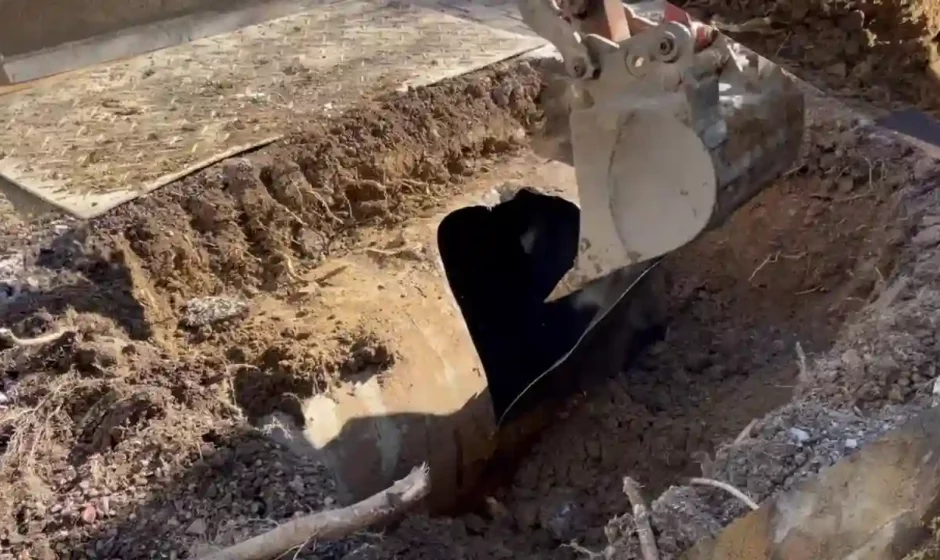The decision to remove an underground oil tank marks the initiation of a meticulous process that involves a series of crucial steps. From the initial assessment of the site to the safe disposal of the tank, oil tank removal is a complex undertaking that demands precision and adherence to environmental and safety standards. In this comprehensive guide, we delve into the start-to-finish journey of oil tank removal, shedding light on the key stages and considerations involved.
1. Site Assessment: Peering into the Past
The journey begins with a thorough site assessment, an essential step in understanding the context and potential challenges associated with oil tank removal. This process involves the use of specialized tools like ground-penetrating radar and soil sampling to determine the location and condition of the tank. Historical research is also conducted to gather information on the tank’s installation date, maintenance history, and any reported incidents.
The site assessment sets the foundation for developing a tailored removal strategy, identifying potential risks, and determining the most effective and environmentally responsible approach.
2. Regulatory Compliance: Navigating the Legal Landscape
Oil tank removal is subject to a myriad of regulations designed to ensure the protection of the environment and public safety. Navigating this complex legal landscape is a critical component of the removal process. Professionals must be well-versed in local, state, and federal regulations governing underground tank removal, obtaining the necessary permits and adhering to prescribed protocols.
Compliance not only safeguards the removal process from legal challenges but also ensures that the operation is conducted with the highest environmental and safety standards.
3. Safe Excavation Techniques: Unearthing the Hidden
With the site assessment and regulatory approvals in place, the next phase involves excavation to expose the underground oil tank. Traditional excavation methods can be invasive and disruptive to the surrounding environment. However, modern technologies, such as horizontal drilling, offer a less intrusive alternative.
Horizontal drilling allows professionals to access the tank without extensive excavation, minimizing disruption to the landscape and reducing the need for costly restoration. This technique exemplifies the marriage of technology and environmental consideration in oil tank removal.
4. Tank Removal and Cleaning: Extracting the Relic
Once the tank is exposed, the removal process commences. Careful extraction is crucial to prevent spills and mitigate potential environmental hazards. After removal, the tank undergoes cleaning to eliminate any remaining oil residues, ensuring that it can be safely transported for disposal or recycling.
The cleaning process may involve the use of specialized equipment and environmentally friendly cleaning agents, aligning with the overarching goal of minimizing the ecological impact of oil tank removal.
5. Contamination Assessment and Remediation: Healing the Ground
The removal of an oil tank may uncover soil contamination resulting from leaks or spills. A thorough assessment determines the extent of the contamination, guiding subsequent remediation efforts. Remediation methods, such as bioremediation or soil vapor extraction, are employed to restore the soil to its natural state.
Contamination assessment and remediation are integral components of the oil tank removal process, ensuring that the environmental impact is not only identified but actively addressed and resolved.
6. Waste Disposal: Handling the Remnants Responsibly
The remnants of the oil tank, as well as any contaminated soil or materials, must be disposed of in accordance with environmental regulations. Responsible waste disposal involves recycling materials whenever possible and ensuring that hazardous waste is handled and transported safely.
By adopting sustainable waste disposal practices, the environmental footprint of oil tank removal is further minimized, contributing to a more eco-friendly process.
7. Site Restoration: Leaving No Trace
As the final step in the oil tank removal journey, site restoration involves returning the property to its pre-removal condition. This includes backfilling excavated areas, reseeding disturbed soil, and restoring any landscaping or structures affected during the removal process.
The goal of site restoration is to leave no visible trace of the oil tank removal, allowing homeowners to reclaim their properties with minimal disruption.
Conclusion
Oil tank removal, from the initial site assessment to the final site restoration, is a meticulous and multifaceted process that demands expertise, adherence to regulations, and a commitment to environmental responsibility. By following this start-to-finish guide, professionals can ensure that oil tank removal is conducted safely, efficiently, and with due consideration for the environment, leaving behind a legacy of responsible environmental stewardship.


